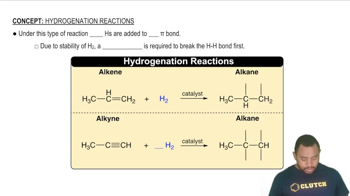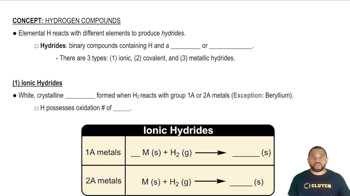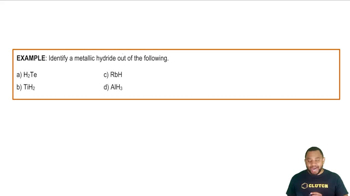Here are the essential concepts you must grasp in order to answer the question correctly.
Hydrogen Ion (H+)
H+ represents a hydrogen ion, which is a proton that has lost its electron. In aqueous solutions, H+ is often associated with acids, as they release protons into the solution. Understanding the behavior of H+ is crucial for analyzing acid-base reactions and the overall charge balance in compounds.
Recommended video:
Hydride Ion (H-)
H- is a hydride ion, formed when hydrogen gains an electron, resulting in a negatively charged species. Hydrides are typically found in ionic compounds and can act as reducing agents. Recognizing the presence of H- is important for understanding the reactivity and bonding characteristics of certain compounds.
Recommended video:
Covalently Bound Hydrogen
Covalently bound hydrogen refers to hydrogen atoms that are bonded to other atoms through shared electron pairs, forming covalent bonds. In molecular compounds, such as PH3, hydrogen typically forms these bonds with other nonmetals. Identifying covalent bonds is essential for predicting molecular geometry and chemical behavior.
Recommended video:
Hydrogen Compounds Example
 Verified step by step guidance
Verified step by step guidance

